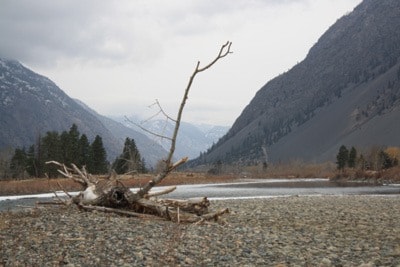RDOS Directors representing the Similkameen were delighted to hear that their project had received approval from the Gas Tax 2011 Strategic Priorities Fund - Capacity Building Projects at the Jan. 5 regional district board meeting.
The funding award - $500,000 - will go towards the Similkameen Watershed Water Quantity / Quality Sustainability Plan.
Four projects were shortlisted by RDOS directors last April for submission to the funding program, including phase one of the Skaha Estates and Kaleden Lakeshore Sewering project, the Okanagan Falls Wastewater Treatment Plant Wetlands Enhancement project, an aquifer vulnerability study and the Similkameen Water Plan.
In 2010, the Similkameen Valley Planning Society (SVPS) completed a “Strategy for a Sustainable Similkameen Valley, 2011-2020” report. One of the strategy’s goals centered on improving water management, with a suggested approach that included completing an inventory of valley water quality and quantity and formulating a water management action plan.
The first step towards achieving this goal was to assess what information is available and what scientific studies were needed to complete the water management plan. The SVPS retained Summit Environmental Consultants to provide this assessment and a report was finished in December 2011. The recommendations listed in the report formed the basis of the grant application submitted by the regional district to the GSPF program.
“For us to be able to look at this whole watershed at this time is great news,” said SVPS chair Brad Hope.
“We have an overview of what needs to be done - we will be meeting soon to seek stakeholder’s input and get going on this.”
Hope said that the announcement came to the SVPS as a very pleasant, but unexpected surprise.
“It goes to show that there is a concern for water out there,” he said, noting that former directors Walter Despot and George Hanson were fundamental players in moving the watershed study to the forefront at the regional district.
The money is envisioned to produce a report that looks at all aspects of water use in the valley, including such key items as water quality and quantity. Hope expressed a desire to see all stakeholders’ views represented, describing the finished plan asd having two parts - stakeholder uses and technical aspects of the watershed. Hope is also pleased at the unity of cause demonstrated so far by the new Similkameen board members.
“It’s a unique group,” he said of the Similkameen Valley Planning Society, “with two First Nations bands, municipal and regional governments all working together for a related cause.” Hope also commented on the timely aspect of the study, coming before the beginning of international negotiations over the Columbia River Treaty, slated to begin in 2014.
During the scoping session that took place in Keremeos council chambers on March 25 in 2011, where the groundwork for the watershed study was initiated, there was some dissension shown amongst several Similkameen water stakeholders present at the meeting, who wanted representation. Hope noted that the initial meeting was a starting point; now that the study has the means to move forward he said that now is the time to bring in stakeholder groups.
The regional district has a year and a half in which to complete the study. Hope expects to make a public announcement regarding an initial meeting very soon.
“I’m very excited about this opportunity,” Hope concluded, “and the society and myself are anxious to get started.”
